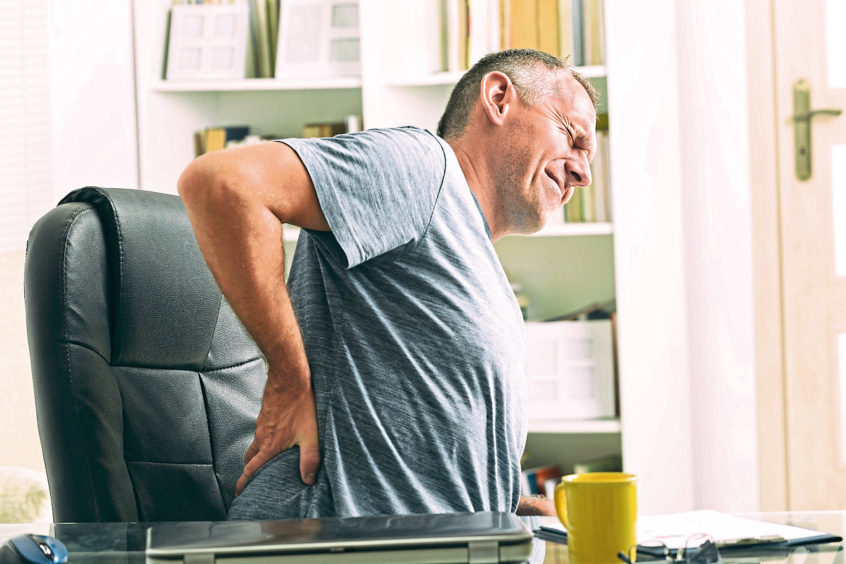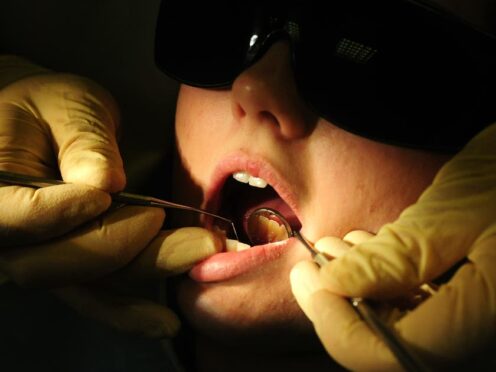The spine is one of the most important parts of the body – it holds you up, keeps your muscles and organs together, and is a vital link between the brain, bones, muscles and nerves.
Yet many people don’t look after their spine properly.
In fact, back pain is the most common cause of long-term sick leave in the UK.
Whether through poor lifestyle choices or bad office set-ups, many of us are unwittingly causing our own back-pain problems.
Here, Stewart Tucker, a consultant spinal surgeon, outlines seven simple ways to avoid putting your spine at risk…
DON’T SMOKE
Most people aren’t aware that smoking can have an impact on your spine health.
“Bone density can decrease when you smoke, which increases the risk of osteoporosis, a condition that weakens the bones and makes them more likely to fracture,” says Tucker.
“Smoking also impairs your blood flow and deprives your spinal tissues of the nutrients and oxygen they need to stay healthy.”
EXERCISE CORRECTLY
“Everyone knows that exercise is good for us, and it’s hugely beneficial to your spine health,” says Tucker. “Engaging in fitness activities helps to keep your back healthy by allowing the discs to exchange fluids, which is how the spine receives its nutrition.”
However, he stresses it’s important that, with any exercise, you hold the right posture.
 “I see many avid gym-goers who haven’t been given the appropriate training on how to use gym equipment, meaning they may be doing themselves damage with their workout style.
“I see many avid gym-goers who haven’t been given the appropriate training on how to use gym equipment, meaning they may be doing themselves damage with their workout style.
“Just as you can hurt your back by lifting heavy boxes or furniture, lifting weights with poor posture can cause damage to your lower spine.
“So if you’re experiencing pain after workouts, it’s best to book in with a personal trainer so they can show you how to use the equipment safely, which is crucial for maintaining a healthy spine.”
BE CAREFUL WITH YOUR SMARTPHONE POSTURE
Research suggests that, on average, Brits spend up to four hours a day glued to their smartphones.
“The term ‘text neck’ has been attributed to the effect that having your head at a 30-60 degree angle for several hours a day can have on your spine,” warns Tucker.
 “This is because the effective weight of your head on your neck increases the more it’s bent, causing heavier strain on your cervical spine.
“This is because the effective weight of your head on your neck increases the more it’s bent, causing heavier strain on your cervical spine.
“A normal standing head position would be facing and looking forward, this allows all the curves in your neck and spine to correctly align, but when the chin’s dropped, you’re stretching the whole structure, often for a long time.
This can cause increasing pain and, in some cases, long-term damage to your neck and spine.”
TRAVEL CAREFULLY
“It’s not necessarily the travelling that’s damaging, it’s the effect that sitting in uncomfortable, unsupportive airplane, car or train seats for a long time can have on the fragile elements of your spine,” says Tucker.
“There are also other factors to consider that go hand-in-hand with travelling, such as heavy suitcases, heavy hand luggage and awkward sleeping positions which can each aggravate painful areas in the back and neck.
“If frequent travel is unavoidable, then try packing a little lighter or coming prepared with supportive neck and lower back pillows.
“Ensuring you get up and move at least once an hour helps too.”
CRANK UP THE CALCIUM
“Calcium is incredibly important to bone health, and dairy products are an important source of calcium,” says Tucker.
“However, if you’re dairy-free due to a certain diet or lactose intolerance, your bones may suffer.
“Calcium deficiency can make bones soft, which means you’ll become susceptible to painful pressure factors in your spine which can lead to serious consequences.
“Make sure you’re getting your required calcium intake by including lots of calcium-rich foods like certain seeds, lentils, leafy green vegetables or fish with soft bones such as sardines or salmon.”
DON’T SIT SO MUCH
“Our bodies aren’t designed for a sedentary lifestyle, but with our present-day society being so heavily technology-driven, many of us are left with little choice but to spend a lot of time sitting at a desk,” Tucker says.
 “This can cause the back muscles around the spine to tense up from supporting the rest of the body in a single stance for so long.
“This can cause the back muscles around the spine to tense up from supporting the rest of the body in a single stance for so long.
“If you have a desk job, make sure you’re not slouching over a keyboard, as this can cause compression on the discs in your spine and lead to premature degeneration, which results in chronic pain.”
AVOID DEHYDRATION
It’s important to drink water for plenty of reasons, but one of the lesser known reasons is the effect that dehydration can have on your spine.
“The discs between your vertebrae need proper hydration otherwise they can’t support the weight of your spinal column and body,” says Tucker.
“Dehydration causes vertebrae to touch each other and, over time, this wear and tear can make the discs more prone to rupturing.”










